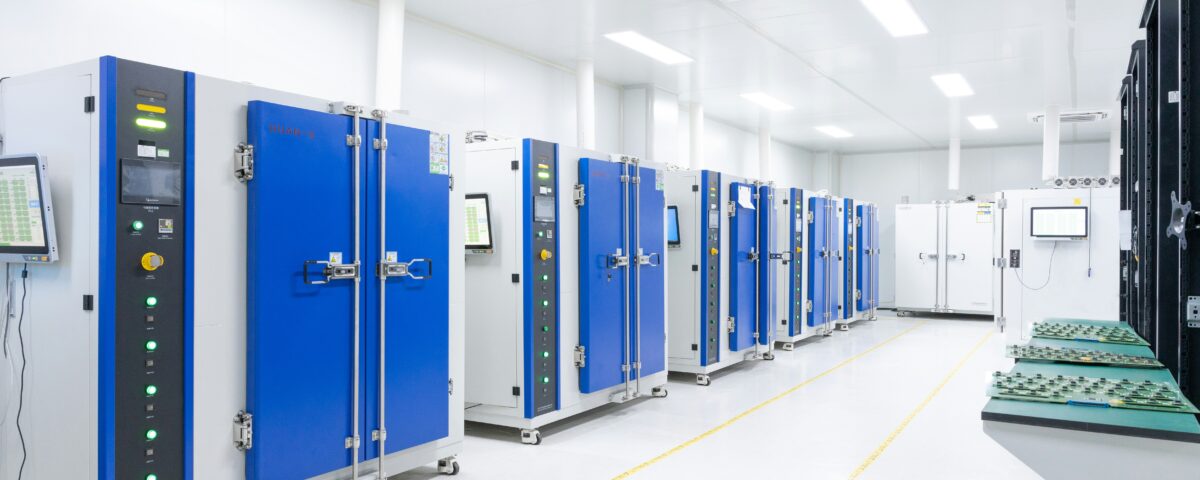The Hidden Costs of Temperature Fluctuations in Data Centers

Equipment Validation: Planting Seeds of Quality with IQ, OQ, and PQ
July 11, 2024
Maximizing Sample Integrity: How Temperature Monitoring Enhances Ultra-Cold Lab Freezer Performance
November 22, 2024The Hidden Costs of Temperature Fluctuations in Data Centers
As the leaves fall and temperatures outside begin to fluctuate, businesses must remember that their data centers are not immune to seasonal changes. Much like the way autumn brings unpredictable weather—chilly mornings turning into warm afternoons—temperature fluctuations within data centers can sneak up and cause significant disruptions.
Data centers are the foundation upon which today’s digital infrastructure is built, powering everything from cloud storage to e-commerce platforms. Just as one might prepare their home for the colder months, ensuring the stable performance of data centers requires diligent temperature monitoring. Even the slightest deviation in temperature, much like a brisk autumn breeze cutting through the warmth of a sunny day, can have a cascading effect on the delicate balance of a data center’s environment. Here's how letting these temperature fluctuations go unnoticed can lead to hidden, but significant, costs.
Just as an unexpected cold snap can catch you unprepared, sudden temperature fluctuations in data centers can cause equipment to "freeze up" or, conversely, overheat. Data center servers are like sensitive plants, thriving best in a specific range—between 18°C and 27°C (64°F to 81°F). A sudden increase, similar to a too-early frost in October, can cause servers to overheat, leading to unexpected downtime and costly repairs.
Even small, unnoticed temperature shifts can slowly damage equipment, much like how a steady drop in temperature can wither leaves. Over time, the cumulative stress shortens the lifespan of servers, storage devices, and networking equipment, resulting in premature replacements that can eat away at your budget.
When temperatures fluctuate wildly, HVAC systems often work overtime, like a furnace struggling to keep your home warm on a particularly chilly autumn night. As HVAC systems overcompensate to restore balance, energy consumption spikes. HVAC systems typically account for 30-40% of a data center's total energy use, but sudden temperature fluctuations can make them as inefficient as trying to heat an old drafty house.
Just as you might weatherproof your home for fall, TempGenius can help data centers optimize their cooling systems by ensuring they only run when necessary. Real-time monitoring prevents energy waste, cutting down on costly bills.
In the same way that an unexpected storm can strip trees of their leaves, downtime due to equipment failure can strip businesses of revenue and credibility. Downtime is the data center’s equivalent of autumn’s early, bitter frost—coming at the worst time and leaving behind damage that is difficult to recover from. The average cost of downtime has been pegged at around $9,000 per minute, which adds up quickly.
Like unseen frost damage, temperature fluctuations can lead to stress that causes equipment to fail when least expected. Without proper monitoring, these fluctuations can erode customer trust over time, much like the gradual fading of a tree’s vibrant fall foliage.
Much like a sudden temperature drop can leave you scrambling for firewood, temperature-related issues in data centers often lead to unplanned repairs and emergency fixes. Overheating causes components to degrade faster, meaning repairs must be made outside normal maintenance windows, which can be costly and disruptive. The urgency of emergency repairs comes at a premium, much like paying extra for heating oil in the middle of a cold snap.
However, with TempGenius monitoring systems in place, businesses can avoid being caught off-guard. Real-time alerts allow data center managers to address temperature deviations early, preventing breakdowns and reducing the risk of costly emergency repairs.
In autumn, many people prepare their homes by sealing cracks and insulating windows, ensuring the heat doesn’t escape. Similarly, many data centers implement energy efficiency strategies, like hot and cold aisle containment, to minimize cooling costs. However, just as an open window can let cold air in and drive up heating bills, temperature fluctuations can compromise energy-saving strategies, forcing reliance on traditional cooling systems.
By maintaining precise, real-time temperature control, TempGenius ensures your energy-saving strategies stay intact, much like making sure your home stays cozy as the temperatures dip.
As the seasons change, data centers can’t afford to let temperature fluctuations sneak in and wreak havoc. Much like how we prepare our homes and wardrobes for the colder months ahead, data centers need robust temperature monitoring to prevent the hidden costs of environmental fluctuations.
Just as autumn is a time to prepare for the challenges of winter, now is the time to safeguard your data center from the hidden costs of temperature fluctuations. By implementing TempGenius, you’re not just preventing disruptions—you’re ensuring your operations run smoothly, no matter how unpredictable the conditions become.
Compliance with the Set Standards
TempGenius temperature monitoring systems are designed and developed to the highest standards. They have met requirements from the CDC, FDA, CAP, ISO 17025, CLIA, Joint Commission (JC), HACCP, and USDA. Furthermore, we provide enterprise temperature alarms and complete temperature logs when Critical Compliance (CCP’s) are out of compliance.
We Provide Certified Calibration Services
With a vast array of software apps and products, we deliver top-notch calibration services that can support validation, traceability, compliance, and quality assurance. Our systems will help you record and monitor deviations and inaccuracies in detail and provide precise results.
Durable and Reliable Systems
Our temperature monitoring platforms are a culmination of robust expertise, cutting-edge technology, and unparalleled experience. Our ultra-stable platforms are created to give you the best performance and durability.
Contact us to customize a Temperature Monitoring Solution for your enterprise.
Give us a call or email us and let's discuss the most appropriate temperature monitoring sensor for your company.

